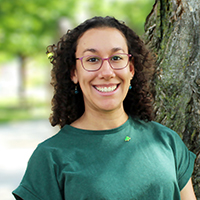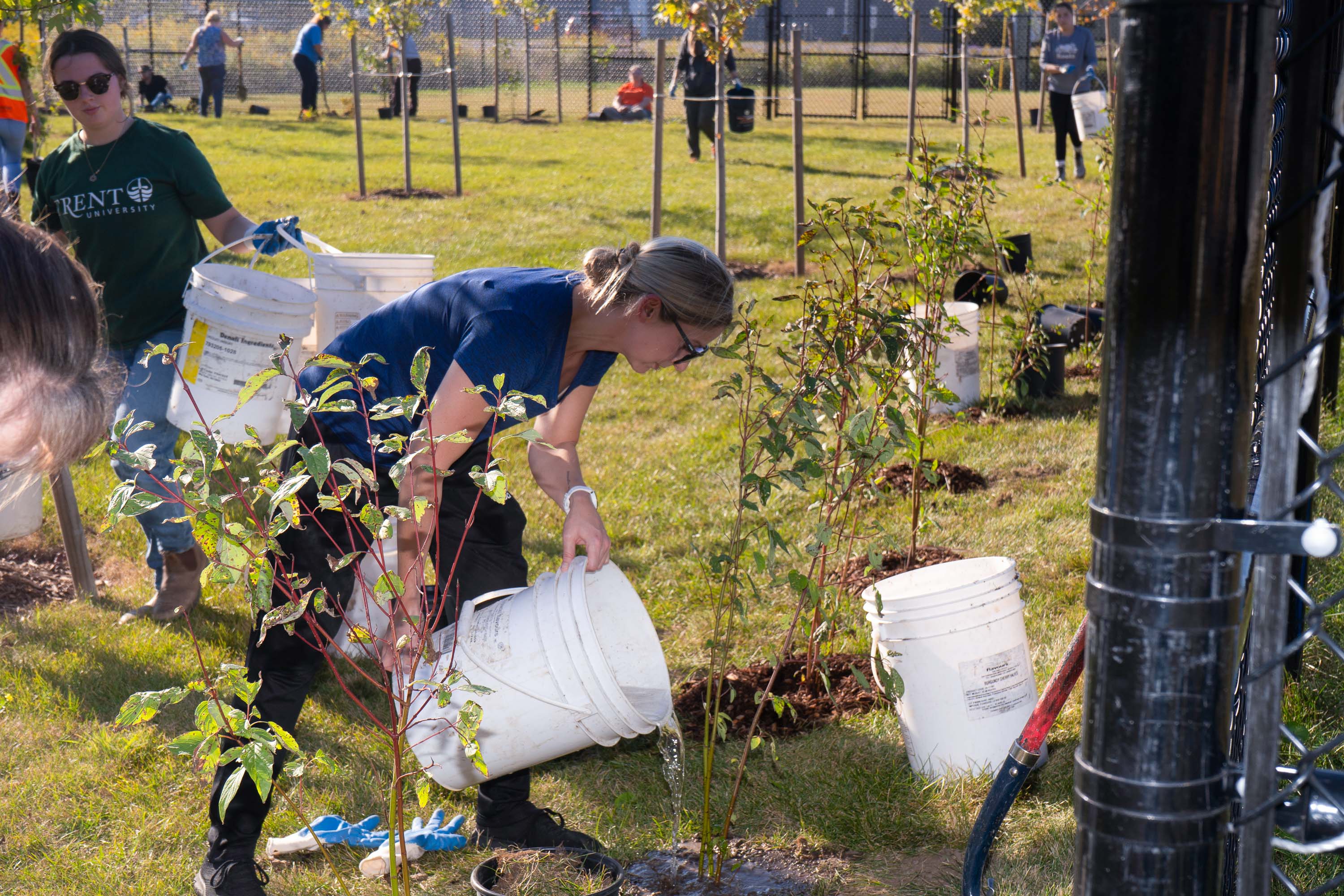Urban trees and shrubs provide numerous benefits to our towns and cities. Lining our streets and filling our parks and green spaces, they provide crucial habitat, shelter, and food sources for wildlife, from insects and birds to squirrels and larger mammals. Trees support our overall health and well-being by reducing our stress and anxiety levels, boosting our immune systems, and offering recreation and physical activity space. Urban trees improve air quality, mitigate flooding and stormwater runoff, cool surface temperatures, and beautify our neighbourhoods.
Urban trees of all sizes work hard! That’s why tree care professionals and trained volunteers work diligently to not only plant, but also actively steward and maintain urban forests ensuring that our community canopies continue to grow and thrive.
Newly planted trees and shrubs require special attention and care during their establishment periods: watering, mulching, pruning, weeding and removing invasive species are all essential to keeping trees healthy. For more established plants, regular monitoring helps to identify and prevent potential issues such as disease, decline, and pest infestations before they become problematic.
Providing trees and shrubs with a base of organic materials, like wood chips or compost, is another way to support tree growth and root health. Woody mulch keeps the soil nutrient-rich and temperature-regulated, supports moisture retention, reduces competition from grass and weeds, and protects the trees’ trunks and roots from mowers and trimmers. Adding two to four inches of wood mulch in a raised ring around a tree’s trunk at the time of planting and every year will maintain a healthy environment.
Pruning: Maintaining Structure and Health
Once a tree has recovered from being transplanted, pruning plays a crucial role in maintaining its health. This practice involves removing dead, diseased, or damaged branches to promote strong structures and evenly spaced limbs in young trees. It’s also beneficial for encouraging good branch formation in young shrubs. However, pruning established trees is best handled by tree care professionals. They can undertake tasks such as crown thinning, raising, reduction, or cleaning to safeguard both people and property.
Battling Weeds and Invasive Species
Weeds and grass compete with trees and shrubs for nutrients, water and sunlight. Limiting and preventing their spread is vital for maintaining a healthy urban forest. While mulching suppresses their growth, manually pulling out a weed’s entire root system with trowels or weeders will prevent regrowth. It may be labour-intensive, but trees will appreciate the sweat equity you put in!
Invasive species are plants, shrubs and trees that are often detrimental to a region’s natural ecosystem as they overtake and replace native species. Removal efforts vary depending on the size of the invasive plant or shrub. For instance, volunteers may handle removal tasks for smaller plants like garlic mustard, while licensed professionals are typically required to extract larger invasive trees like European buckthorn.
Back to all articles


